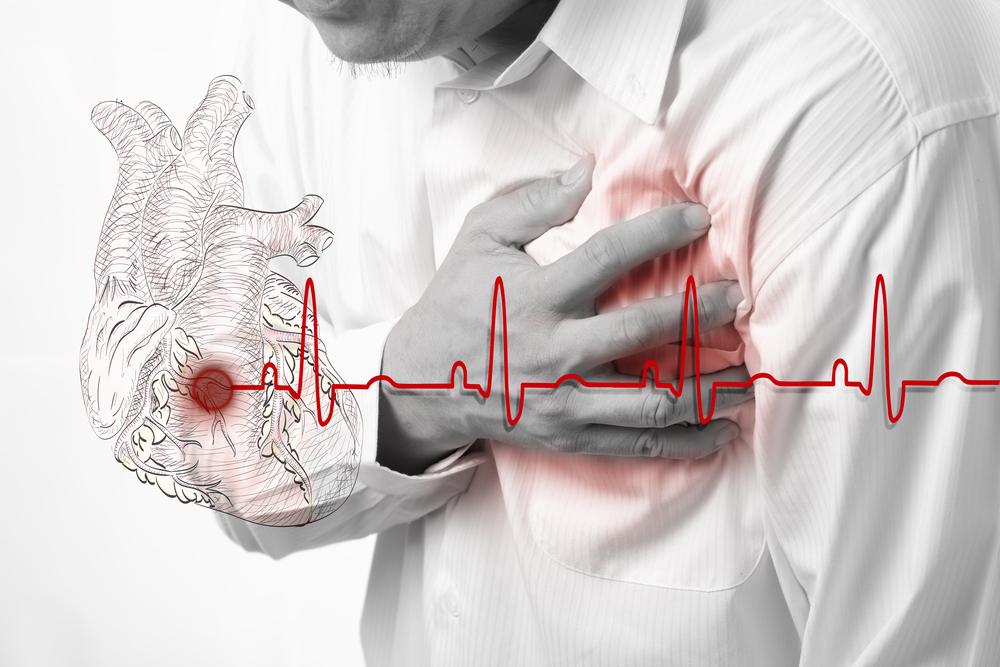Symptoms And Treatment For Atrial Fibrillation
Symptoms and treatment for atrial fibrillation
Atrial refers to left and right atriums, which are chambers of the heart through which the blood enters and passes out. Fibrillation is the rapid unsynchronized expansion and contraction of the muscle fibers leading to abnormal beating. So atrial fibrillation means the rapid and irregular beating of the two chambers of the heart. It begins beating for a short duration and elevates after some time.

Atrial fibrillation happens because the sinus node sending out regular electrical impulses, different places in and around the atria (the upper chambers of the heart) also produces electrical messages, in an uncoordinated way. These multiple, unusual messages make the atria quiver or jerk, which is known as fibrillation. This is characterized by an irregular and sometimes fast heartbeat, or pulse. The initial beating shows some or no symptoms at all, but the patient can feel it. If checked up by a doctor, the little problem can also be traced, and a suitable medication can be prescribed to cease the escalation.
Symptoms of atrial fibrillation
The symptoms experienced by someone suffering from atrial fibrillation are mentioned below:
- Heart palpitations : Irregular heartbeats that might or might not be felt by the patients and your heart may also beat very fast. The heartbeat might be so fast that you will become aware of it.
- Fainting : Loss of consciousness and muscle strength leading to a person falling. The blood sugar level falls, and the organs are not receiving enough oxygen. Often followed by a blurry vision and lightheadedness, it lasts for a lesser duration, after which the person gains back his consciousness.
- Lightheadedness : Feeling of dizziness, when someone is blacking out and has a blurred sense of reality. It might also be accompanied by irritation in the stomach and loss of control of the body.
- Shortness of breath : Discomfort in breathing and feeling of losing oxygen. Oxygen does not reach the heart properly which is often followed by short-lived chest pain.
- Chest pain : Due to loss of blood flow through the heart muscles which happens because enough oxygen does not reach the heart. Chest pain and deprivation of oxygen are directly proportional to each other.
- Swelling of the lower extremities : Accumulation of fluid in tissues of the lower limbs which leads to swelling. Also known as peripheral edema.
- Chances of lung diseases : Are high due to lack of oxygen and blood supporting the lungs.
Patients are having high blood pressure or other heart diseases like coronary artery disease, rheumatic fever, mitral stenosis, etc. have an increased risk of getting this disease. This disease can also be a gateway to other diseases like stroke and dementia. Patients having previous heart surgeries for any other diseases might also be at its risk. However, it can be treated with some afib stroke medications.
Also, after atrial fibrillation treatment, people suffering from lung problems, like pneumonia and lung cancer, have found some association with this disease. In elderly and middle-aged people, heavy exertion due to exercising or work and excessive alcohol consumption might also play a part to increase its chances. People having a family history of atrial fibrillation might also be affected.
Suitable atrial fibrillation treatments
Treatment atrial fibrillation for different kinds of atrial fibrillation and different atrial fibrillation treatment is mentioned below:
- Initial attacks: The doctors try to restore normal heartbeat rate through medications. If not possible, then a technique called Electrical Cardioversion is used. An electric shock of low voltage is sent through the chest to normalize the heart rate. This can restore the normal rhythm and works in more than half of the cases.
- Rate control : The atrial rhythm rate is not controlled, but the heart rate is slowed down to make synchronization between them. This is done through medications like beta-blocker, digoxin, etc. This is the most common method for atrial fibrillation treatment.
- Rhythm control : In this, the rhythm rate of the atrial vibrations is controlled to get a normal one. This is also done through medications, but its side effects are more than the rate-control technique. Common drugs used are amiodarone, flecainide.
- Stopping atrial fibrillations completely: This can be done through non-drug usage. The technique is called radiofrequency catheter ablation. An extremely thin flexible tube called catheter is inserted through the groin into the heart. The front of the catheter carries an instrument that emits radio waves which are helpful in stopping the uneven atrial movements. It is done only in extreme cases and is not recommended until done so by the medical team. Its effectiveness also is not so prominent and may wear off after a point of time. This is the most common method for atrial fibrillation treatment.
- Anticoagulation : The effect of this disease might also include blood clotting. Most people require anti-clotting medications to eradicate it. Drugs like Pradaxa, Eliquis are effective in these cases. They don’t require periodic monitoring and are not so expensive as other atrial fibrillation medications.
The kinds of various afib treatment option or afib treatments can help ease the pain and identify the symptoms. However, atrial fibrillation treatment should not be stopped mid-way, and proper care should be taken post atrial fibrillation treatment.


